WDDA Western Digital Warning- are your NAS drives doomed? Should you replace your drives? Response to STOP buying WD NAS drives !!!
In recent months, Synology NAS users have been receiving a warning known as WDDA (Western Digital Device Analytics) on their WD drives after approximately three years of use. This warning message advises users to replace their drives as they have reached their expected lifetime. However, some users have performed SMART tests on their drives, and the results came back normal. This has led to confusion and uncertainty among users, prompting the question of whether it is necessary to replace the drives or if the warning can be ignored. In this article, we will explore the meaning of WDDA, its warning levels in DSM 7, how to interpret and respond to each situation, which drives are affected, and the role of WD and Synology in handling this issue. We will also discuss the comparison with Seagate Health Management and how QNAP approaches similar warnings differently. Additionally, we will address whether it is advisable to disable the WDDA feature and provide instructions on how to do so if desired.
Update (07:17 GMT 13/6/23)
Synology has been in touch regarding this video and was keen to make the following statement regarding WDDA Drive support and use on their DSM software platform.
“We disagree with the statement that is it not possible to disable usage of WDDA services on supported WD Red hard drives. We would like to confirm the following:
- You can enable/disable WDDA from Storage Manager at any time from the UI. This will remove any warnings (assuming the drive is healthy otherwise).
- Storage Manager has always allowed administrators to “suppress” non-severe drive warnings. This option is also available for this particular warning.
Additionally, regarding the support of WD Red Drives with WDDA on-board services, in DSM:
- WDDA was only introduced into DSM 7.0 (July 2021).
- WDDA is not enabled by default.
- Synology has already deprecated WDDA, and it is not included on any -22 series or newer system (e.g. DS1522+)
WDDA, and its triggers and warnings, are not developed or controllable by Synology. So while DSM can ignore warnings thrown by WDDA, this defeats the purpose of the health monitoring tool that the administrator knowingly enabled. “ – An Official Synology Source, 9th June 2023
Back to the Original Article:
What’s happening? When did this all start?
In recent times, an interesting phenomenon has caught the attention of users in various online forums. People have begun questioning why DSM 7, the operating system used in Synology NAS devices, displays warnings on drives that are merely three years old. This puzzling situation has left many scratching their heads since SMART checks, a commonly used diagnostic tool for assessing drive health, indicate that these drives are functioning perfectly fine. The source of this seemingly contradictory warning lies in WDDA (Western Digital Device Analytics). It has become apparent that WDDA plays a significant role in triggering the warnings, even when SMART checks report no issues. The discrepancy between SMART test results and the persistent warning has sparked confusion and prompted users to seek answers and solutions to this perplexing dilemma.

WDDA: WARNING:
The drive has accumulated a large number of power on hours through the entire life of the drive.
Please consider to replace the drive soon.
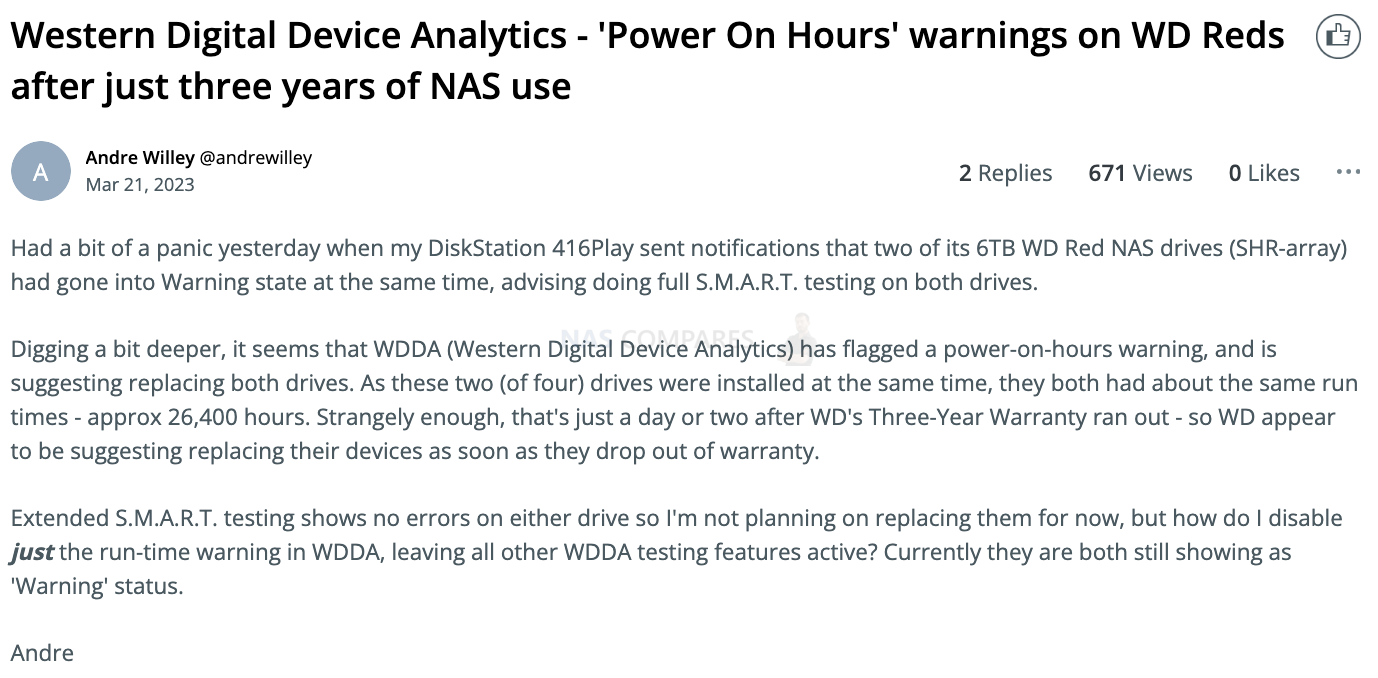
https://community.synology.com/enu/forum/1/post/159537

What is WDDA?
WDDA, which stands for Western Digital Device Analytics, is a feature and framework developed by Western Digital, a prominent manufacturer of hard disk drives (HDDs) and solid-state drives (SSDs). WDDA aims to provide valuable insights into the health, performance, and overall condition of WD drives. It encompasses various metrics and parameters derived from HDD specifications, including load/unload cycles, MTBF (mean time between failures), TBW (terabytes written per year), and power-on hours per year. By analyzing these factors, WDDA helps to assess the drive’s usage patterns, potential wear and tear, and expected lifespan. It provides a holistic view of the drive’s health, allowing users to make informed decisions regarding maintenance, replacement, or further diagnostics. With WDDA, Western Digital aims to empower users with proactive drive management capabilities and ensure the optimal performance and reliability of their WD drives.
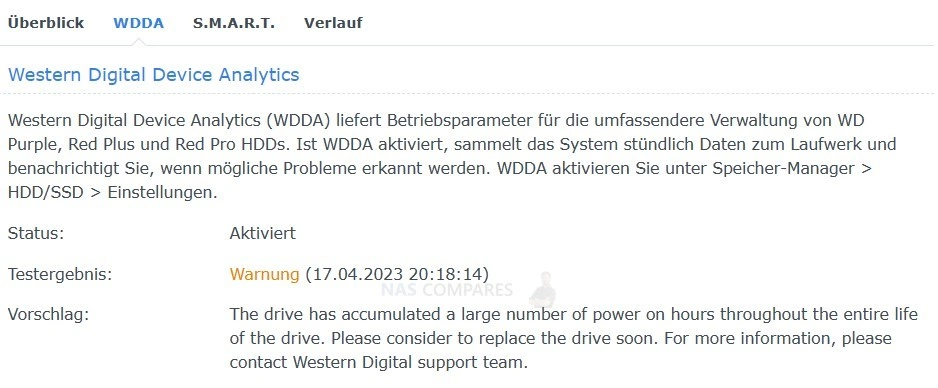
https://www.westerndigital.com/solutions/device-analytics
Reading HDD spec sheets can be daunting if you’re not familiar with the terminology and metrics used. However, understanding key specifications can provide valuable insights into the performance and longevity of a hard disk drive (HDD).
One important metric is MTBF (mean time between failures), which indicates the average expected time between drive failures. A higher MTBF generally implies greater reliability. Unload cycles refer to the number of times the read/write heads are parked and unparked, which can affect the mechanical wear of the drive. Lower unload cycle values are generally desirable as they indicate reduced stress on the drive mechanism.
Power-on hours per year provides an estimate of how long the drive has been operational. It gives an indication of the usage intensity and can be useful in assessing the wear and tear on the drive. Workload per year refers to the amount of data written to the drive within a specific period. This metric is particularly important for drives subjected to heavy workloads, such as in NAS or server environments.
When evaluating an HDD, it’s crucial to consider these specifications in relation to your specific use case. For example, a drive with a high MTBF, low unload cycles, and a workload rating suitable for your intended usage will likely offer better longevity and performance. It’s also important to note that different manufacturers may use slightly different terminologies or methods of calculating these metrics, so it’s advisable to consult the official documentation or reach out to the manufacturer for clarification if needed.
By familiarizing yourself with these metrics and understanding their significance, you can make more informed decisions when selecting and managing HDDs for your storage needs.
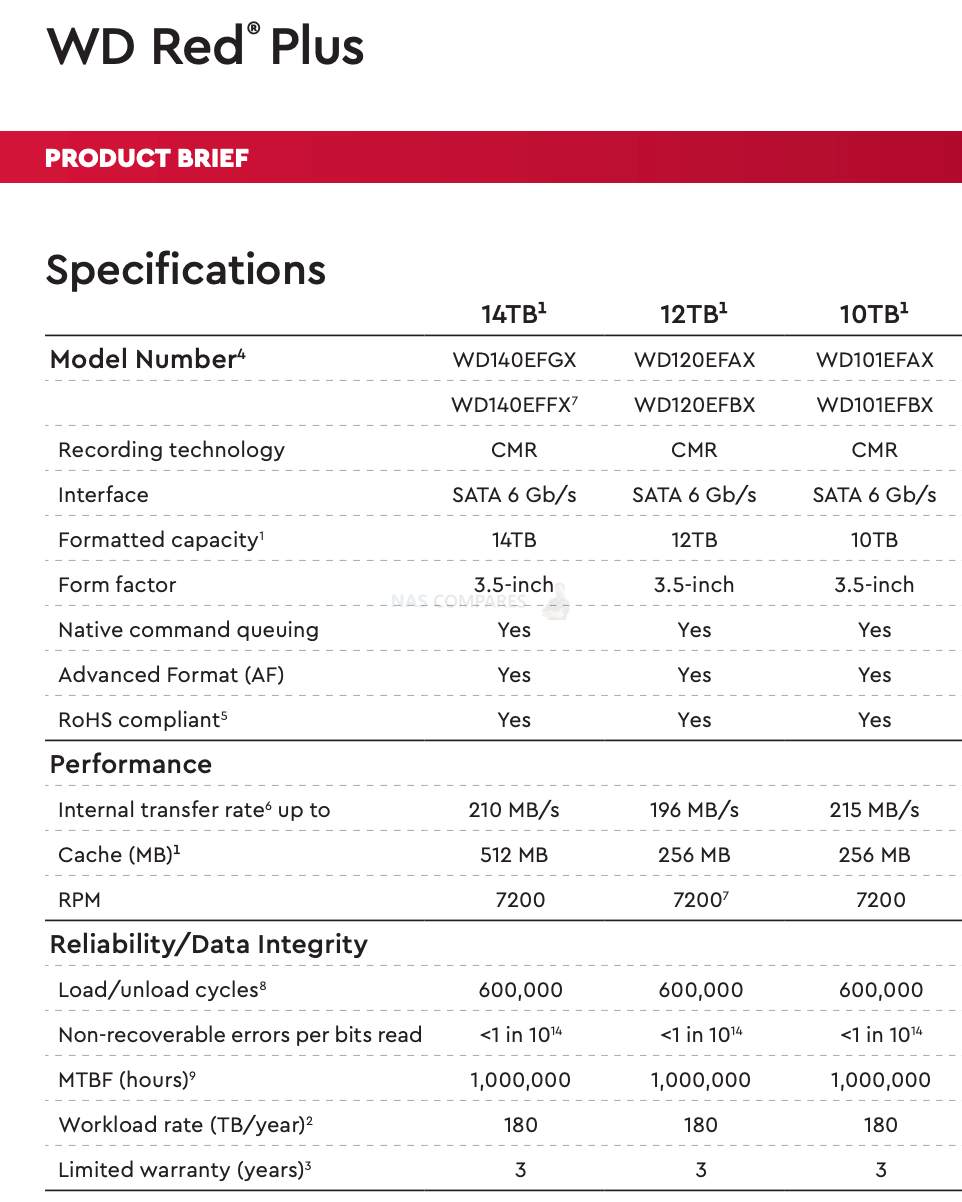

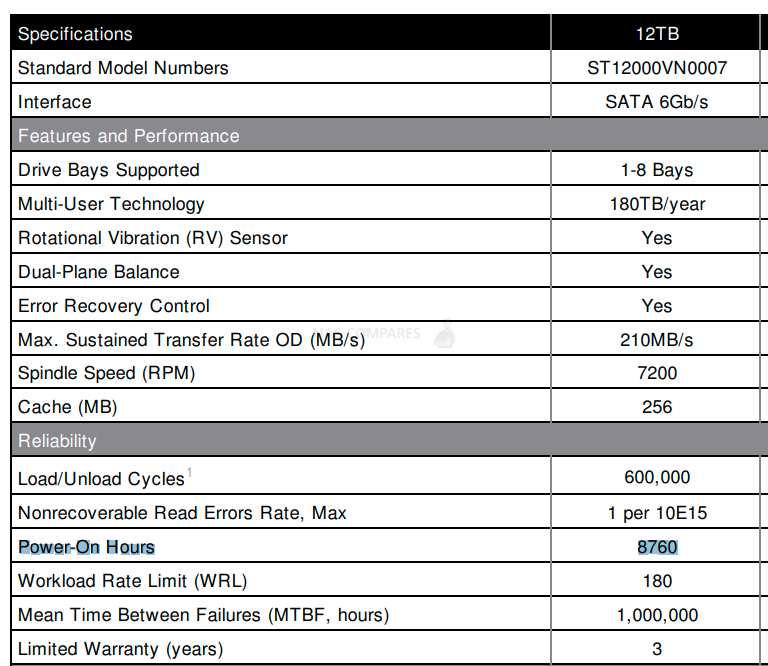
What exactly the warning says? It is a Warning not ERROR. Is it similar to Synology ONLY drive warning?
When it comes to the warning message displayed in DSM (DiskStation Manager), it’s important to note that it is a “Warning” and not an “Error.” This distinction implies that the situation is not critical or immediate, but it does warrant attention and consideration. The warning message typically indicates that the drive has accumulated a significant number of power-on hours throughout its lifespan, suggesting potential wear and usage. The purpose of the warning is to inform users that based on Western Digital’s device analytics (WDDA), it may be prudent to consider replacing the drive soon.
It’s worth noting that this warning is not exclusive to Synology drives. While Synology does have its own drive compatibility list and may provide warnings specific to incompatible or uncertified drives, the WDDA warning is separate. The WDDA warning is a result of Western Digital’s analytics system and is applicable to WD drives across different NAS platforms, not limited to Synology. Therefore, it’s essential to differentiate between the warnings specific to Synology drives and the broader WDDA warning that applies to WD drives universally.
Understanding the nature of the warning and its context can help users assess the health and reliability of their drives, determine the appropriate course of action, and decide whether replacing the drive is necessary or if further diagnostic tests are required.

What does Warning mean in DSM ? What action is expected? Is it the same as non Synology HDD warning?
What to do if I get this warning? What can I do if a drive is in “Warning,” “Critical,” or other abnormal statuses?
What other Statuses are there in DSM?

In DSM (DiskStation Manager), the “Warning” status indicates that the system has detected certain issues or an increase in bad sectors on the drive. While the drive may still be functioning adequately, it is essential to monitor its health and the count of bad sectors. The warning serves as an alert to potential problems and prompts users to take action to ensure data integrity and prevent potential drive failure.
If you receive a warning status for a drive, it is recommended to closely monitor the drive’s performance and conduct further diagnostics. This can include running SMART tests, examining the drive’s S.M.A.R.T. attributes, and checking for any signs of deteriorating performance or unusual behavior. In some cases, it may be necessary to back up important data from the drive as a precautionary measure.
In addition to the “Warning” status, DSM includes other statuses to indicate drive health and conditions. These statuses include:
- Healthy: This indicates that the drive is in good condition, and there are no detected issues or warnings. However, it’s still important to regularly monitor the drive’s health and performance.
- Critical: The “Critical” status suggests the presence of one or more critical issues on the drive. In such cases, it is highly recommended to replace the drive immediately to avoid potential data loss or further damage.
- Failing: The “Failing” status indicates severe issues on the drive, where drive integrity cannot be guaranteed. It is crucial to replace the drive without delay to prevent data loss and system instability.
Understanding these statuses and their implications helps users determine the appropriate actions to take based on the severity of the warning or abnormal status. Regular monitoring, proactive diagnostics, and timely drive replacements are key to maintaining a reliable and efficient storage system.
https://kb.synology.com/en-au/DSM/tutorial/Drive_in_abnormal_statuses
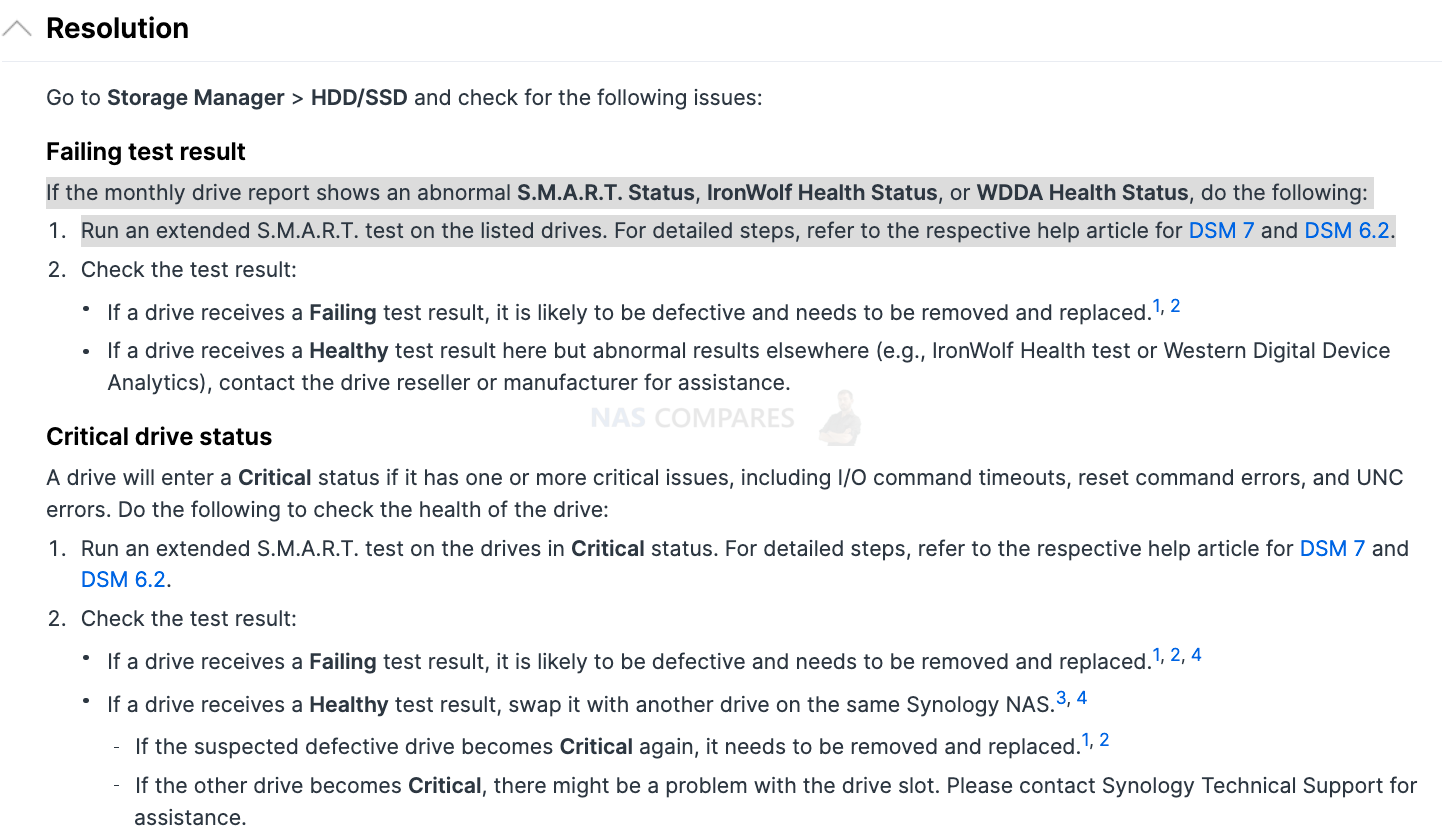
https://kb.synology.com/en-au/DSM/tutorial/Drive_health_report_what_to_check_for
What drives are affected? Its not just NAS drives / What drives support WDDA
The impact of WDDA is not limited to just NAS drives; it extends to various hard disk drive (HDD) models. Some of the drives affected by WDDA and its associated warnings include the Red™ Pro 12TB (WD121KFBX – 68EF5N0), Red™ Plus 12TB (formerly known as Red™) (WD120EFAX – 68UNTN0), and Purple™ 8TB (WD82PURZ – 85TEUY0). These drives have been identified as triggering the WDDA warning in Synology NAS devices running DSM 7.
For instance, users have reported receiving WDDA warnings on their Synology DS218 (with DSM 7.1.1-42962 Update 4) when using the WD60EFAX-68SHWN0 drive. Additionally, users on forums have mentioned that WDDA works with their DS218+ model and their 12TB WD Red drives (specifically the WD120EFAX model) from 2019. Another user reported receiving notifications on their DiskStation 416Play regarding two of their 6TB WD Red NAS drives in the SHR-array.
It’s important to note that WDDA is specific to Western Digital drives, and not all WD drives are affected. The exact list of drives supporting WDDA may vary, so it’s recommended to refer to official documentation or contact Western Digital for the most up-to-date information.
Additionally, it’s worth mentioning that other drive manufacturers, such as Seagate, have their own drive health management systems, which may operate differently from WDDA. Therefore, it’s essential to consider the specific drive models and their associated features when evaluating drive health and compatibility with different NAS systems.
Red™ Pro 12 TB WD121KFBX – 68EF5N0
Red™ Plus (formerly known as Red™) 12 TB WD120EFAX – 68UNTN0
Purple™ 8 TB WD82PURZ – 85TEUY0
https://kb.synology.com/en-my/DSM/tutorial/Which_Synology_NAS_supports_WDDA
DS218 DSM 7.1.1-42962 Update 4 – WD60EFAX-68SHWN0
WDDA works in my DS218+ with my 12TB WD Red drives from 2019 (WD120EFAX)…
DiskStation 416Play sent notifications that two of its 6TB WD Red NAS drives (SHR-array)
https://www.reddit.com/r/synology/comments/nhphn0/wdda_and_dsm7/
Seagate
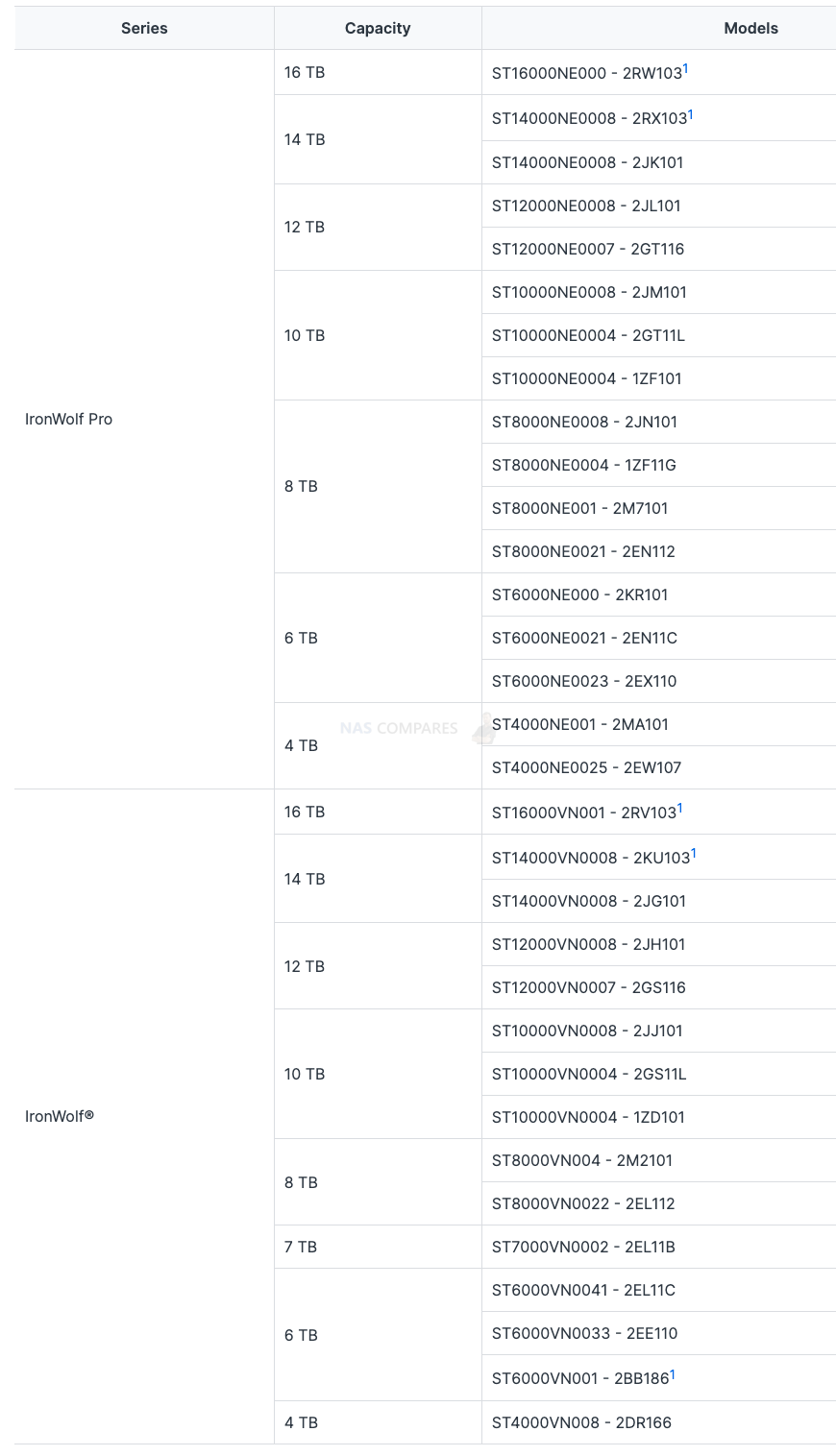
https://kb.synology.com/en-ro/DSM/tutorial/Which_Synology_DiskStation_RackStation_supports_Seagate_IronWolf_Health_Management
Who is to Blame? WD or Synology?
How Synology are handling this issue?
When it comes to the issue of WDDA warnings and the responsibility for addressing them, it is important to understand the roles of both Western Digital (WD) and Synology. WD is the manufacturer of the hard disk drives (HDDs) and is responsible for implementing the WDDA feature that generates the warnings based on drive analytics. Synology, on the other hand, is the provider of the NAS (Network-Attached Storage) systems that utilize these drives and integrate the WDDA functionality into their DSM software.
In terms of handling the issue, Synology typically advises users to contact WD for further assistance. This approach is understandable as WD is the manufacturer and has a deeper understanding of their drives and the WDDA feature. WD may request users to run SMART tests to assess the drive’s health, and if the drive passes the test, it can create a discrepancy between the WDDA warning and the drive’s actual condition.
However, some users have expressed frustration with Synology’s response, as they believe that Synology should take more responsibility in handling the issue. Users argue that while WD provides the information through WDDA, it is up to Synology’s DSM software to determine how to act on this information. The inability to disable the WDDA warning in DSM 7, even if the drive passes SMART tests, has raised concerns among users who feel that the warning may cause unnecessary alarm or prompt premature drive replacements.
It is important to note that both WD and Synology continuously update their software and firmware to address such issues and provide better user experiences. However, the resolution of the WDDA warning situation would require collaboration and coordination between both parties to ensure that the warnings are accurate, properly interpreted, and provide actionable guidance for users.
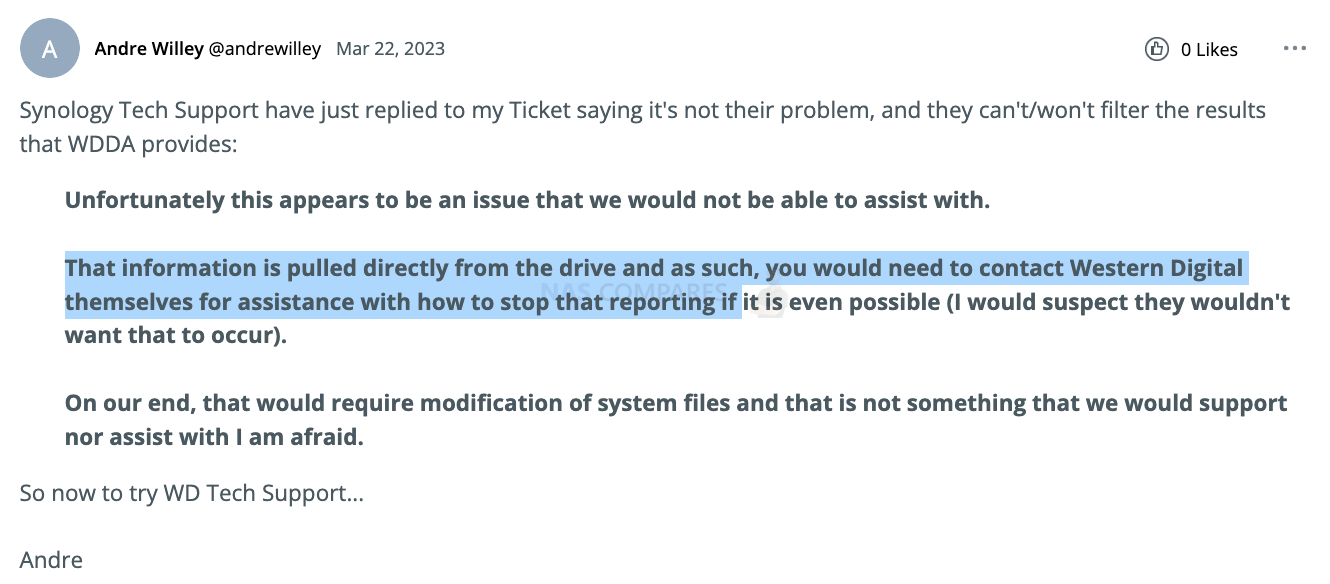
Is QNAP and other NAS affected?
When it comes to the impact of WDDA warnings, it’s worth noting that different NAS (Network-Attached Storage) manufacturers may handle them differently. QNAP, for example, takes a slightly different approach compared to Synology. QTS, the operating system of QNAP NAS devices, prioritizes SMART checks over the WDDA information. This means that QNAP systems do not constantly display warning messages based solely on WDDA data unless there is a significant issue detected.
In contrast to the approach taken by Synology, where WDDA warnings are shown even if the SMART tests come back okay, QNAP systems do not inundate users with warning messages unless there is a more serious concern. QTS OS focuses more on SMART test results to determine the health status of the drives, which can help alleviate unnecessary panic or fear among users.
While QNAP and other NAS manufacturers may still utilize WDDA information for certain critical issues, they generally prioritize SMART tests and rely on more immediate indicators of drive health. This approach aims to provide a clearer and more actionable assessment of drive conditions, ensuring that users are alerted only when there is a genuine cause for concern.

https://www.qnap.com/en/release-notes/quts_hero/overview/h5.1.0
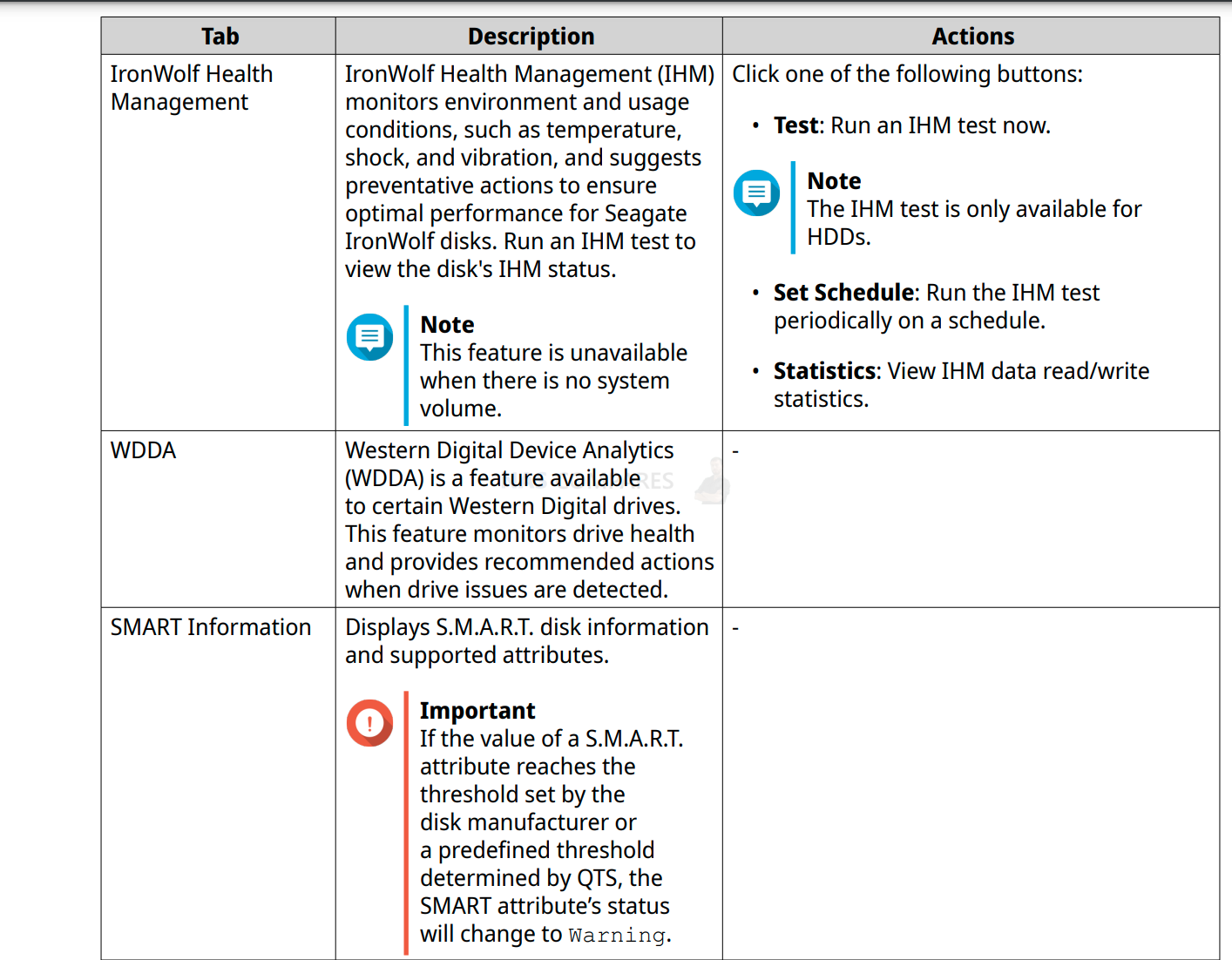
Should I disable WDDA? How to disable WDDA? Should we stick with DSM 6?
Whether or not to disable WDDA (Western Digital Device Analytics) is a decision that depends on individual preferences and considerations. Disabling WDDA means that the warnings generated by this feature will no longer be displayed in the DSM (DiskStation Manager) interface. However, it’s important to note that WDDA provides additional information about the drive’s usage and lifespan, which some users may find valuable.
To disable WDDA in DSM, you can use SSH (Secure Shell) access and run the following command:
sudo synosetkeyvalue /etc.defaults/synoinfo.conf support_wdda no
This command modifies the configuration file to set the “support_wdda” value to “no,” effectively disabling the WDDA feature. Keep in mind that SSH access and running commands require technical knowledge and should be done carefully.
As for sticking with DSM 6 or upgrading to DSM 7, it ultimately depends on your specific needs and priorities. DSM 7 may offer new features, improvements, and security enhancements compared to its predecessor. However, it’s recommended to thoroughly research the changes and potential compatibility considerations before making the decision to upgrade.
It’s important to note that disabling WDDA or deciding on the DSM version should be done after careful evaluation of the potential impact and considering the specific requirements and preferences of your NAS setup. If uncertain, consulting official documentation, seeking guidance from manufacturer support, or engaging in community discussions can provide valuable insights to make an informed decision.

Where to Buy a Product





![]()
![]()

VISIT RETAILER ➤






![]()
![]()

VISIT RETAILER ➤






![]()
![]()

VISIT RETAILER ➤






![]()
![]()

VISIT RETAILER ➤
We use affiliate links on the blog allowing NAScompares information and advice service to be free of charge to you.
Anything you purchase on the day you click on our links will generate a small commission which is
used to run the website. Here is a link for Amazon and B&H.
You can also get me a ☕ Ko-fi or old school Paypal. Thanks!
To find out more about how to support this advice service check HERE
Beelink ME Pro NAS Revealed
Best SOLID STORAGE NAS of 2025
Should You Worry About the NanoKVM Hidden Microphone?
Best Cheap NAS of 2025
Minisforum MS-02 Ultra - WHO IS THIS FOR??? (The First 48HRs)
Why People Use TrueNAS, UnRAID and Proxmox to Turnkey NAS (Synology, QNAP, etc)
Access content via Patreon or KO-FI
Discover more from NAS Compares
Subscribe to get the latest posts sent to your email.


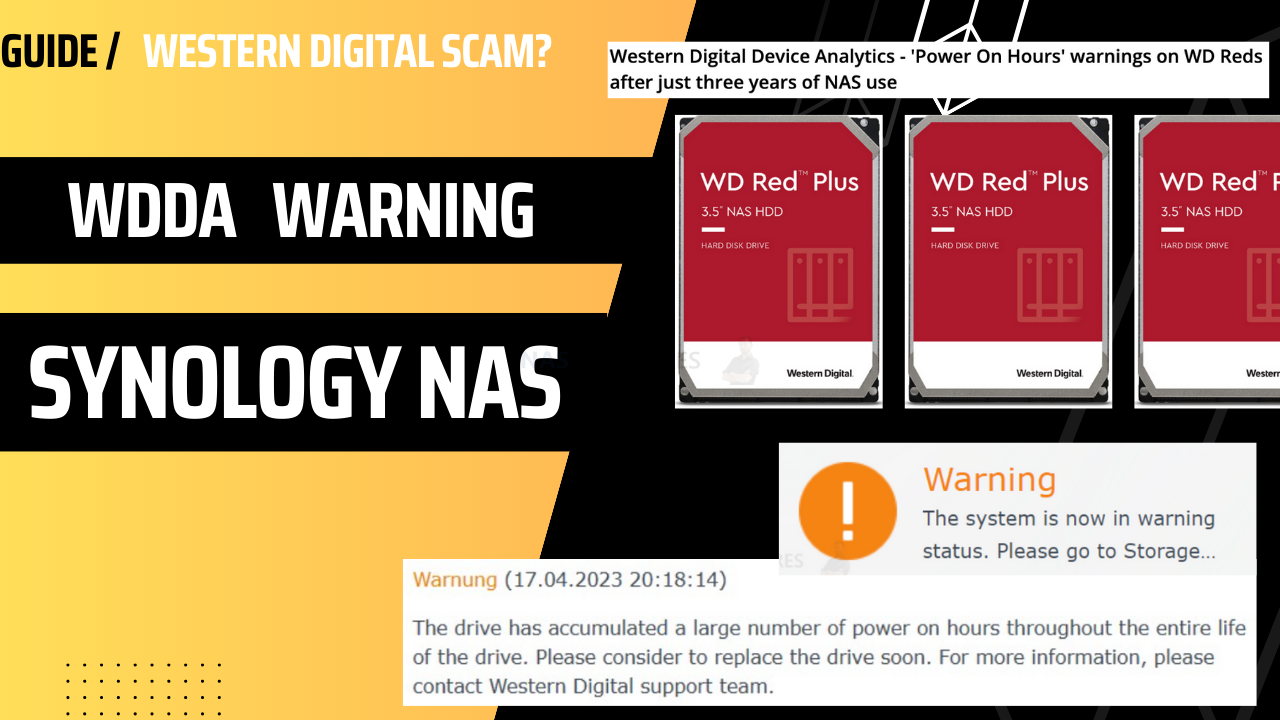



This video sounds like a very western digital sided video and almost like WD reached out and payed them to make this video to explain the their reasoning.
Western digital wrong, myself and many others are not purchasing this products for this reason neither should anyone else until the rectify it.
REPLY ON YOUTUBE
Can someone please help me, what is this website tab everyone seems to have where it shows “Storage Manager”!? I for the LIFE of me cannot figure out where or what this is called all I want to do is just check if mine shows WDDA on my drive
REPLY ON YOUTUBE
WD is getting even more ridiculous with what they are doing in the hdd department.
REPLY ON YOUTUBE
At least we arent being charged monthly subscription fees to acces SMART diagnostics… Yet????????
REPLY ON YOUTUBE
The hidden cost of photography is the need for large storage space. I used to recommend Western Digital drives but after two failed experiences trying to receive a WD RED NAS HDD and now having read similar stories of bad experiences I can say with assurance I will never buy from them again. I tried to use reputable sellers, Amazon and Wal-Mart, but they passed the buck claiming returns/refunds were the responsibility of third-party resellers. One knew nothing about proper shipping. The other one sent a bad unit and perhaps even a refurbished disguised as new.
Now you may say this is not Western Digital’s fault. But to understand their role in this is to understand how these manufacturers have changed their distribution channels and vendors for cost cutting measures that leave the consumer poorer quality control and service.
Neither Amazon or Wal-Mart represented these as from third party resellers and consequently did not support them with their return policies. All of them are involved in shady business practices. I share this with you for consideration as you make your purchasing decisions.
REPLY ON YOUTUBE
Thanks for the instructions. I have bunch of WD Red plus Drives which i bought a long time ago but have been sitting on shelf unopened. Is there chance that this WDDA only checks for the date when the drives where manufactured and turns the flag on even though the drives haven’t been powered on?. These batch of NAS drives are the last once i buy from WD.
REPLY ON YOUTUBE
I had WD Reds in my old Synology NAS drive. But on upgrading I went with Seagate Iron Wolfs. At the time it was not known about the WD thing. I had no problem with the 3TB drives. Still have a few spares. I don’t think I had the option to turn on this “feature”, but one drive had been having issues so I had replaced it under warranty. Very happy with the new drives now. I do not like it when companies try these underhanded approaches like this.
REPLY ON YOUTUBE
Why wouldn’t Synology just handle that warning by showing an “Out of Warranty” status, either as an active drive status or an event log entry?
REPLY ON YOUTUBE
3 years is a long time for a little motor to spin on a hdd that’s brutal work! After 3 i replace em.
REPLY ON YOUTUBE
I only used to purchase WD external hard drives, the portable kind and home Elements. They’ve been okay over the years But I always purchase them from Costco so with such a generous return policy it was never a worry. Only purchased Seagate drives for my NAS. Recently was briefly considering a 16TB WD Red instead of an Exos as I was under the impression they were quieter, better etc except maybe for the price I guess? Now having just purchased a SanDisk cruiser SSD drive for Prme days I didn’t realize they were owned by Western digital, so I will be returning that as it seems very problematic. Will be skipping any other WD purchases I was already hesitant due to their cmr issue.. actually it should be a scandal. The company sounds like it’s a complete shit show actually not sure why anyone would buy anything from them anymore.
REPLY ON YOUTUBE
its not been a year and its been a nightmare that its showing that my HD is critical, shame WD
REPLY ON YOUTUBE
Glad I switched from WD drives to a different brand in my Synology NAS.
REPLY ON YOUTUBE
Congrats for the channel, a must watch for anyone who follows and loves the NAS subject. Currently I am using a Qnap tvs 473 which shows through the Unlike DA tool a Moderate Risk of Failure for one of the three WDD red drives that I am using. In your opinion , how worried should I be and should I think about replacing that drive asap? Thank you!!!!
REPLY ON YOUTUBE
I just purchased a QNAP TS464 with Seagate Ironwolf HDD’s and deliberately ignored WD given this situation. I agree that ‘more’ HDD alerts are good BUT they need to be informative and objective in context so users can decide appropriate action for their own situation. The WD approach is disengenuous and commercially motivated at best and seems cynically aimed at driving premature hardware replacements. My impression is that Eddie really failed to accept this nuance and ultimately puts it to Synology (who clearly suck in thier right) to resolve without a clear argument for his firm views.
REPLY ON YOUTUBE
I have some WD Red Pro drives on my desktop PC, but I use Linux, so I don’t think this affects me. Or does it?
REPLY ON YOUTUBE
God help the data centre manager trying to explain why CapEx and OpEx costs have skyrocketed. Purple Drives (used for continuous CCTV recording) obviously “Write” all the time, and only read when you want to “check the footage”, (they read very slowly, but that is not why you buy them).
REPLY ON YOUTUBE
WOW!!!!!!!!!!!!
????????????????????
REPLY ON YOUTUBE
Thanks! Good video. On my DS1821+, DS1621+, and DS1520+ (all DSM 7.2-64561) WDDA was enabled in the synoinfo.conf file (support_wdda=”yes”). However, none of my WD drives had the WDDA option showing in Storage Manager – HDD/SSD – Health Info (multiple 8TB WD80EFZZ-68BTXN0 and 14TB WD140EFGX-68B0GN0). As a precaution I have set support_wdda=”no” (via SSH instruction) on all three of my NAS units.
SSH command: sudo synosetkeyvalue /etc.defaults/synoinfo.conf support_wdda no
Reminder: Don’t forget to turn off (uncheck) SSH access when done.
REPLY ON YOUTUBE
Thank you for information as always!!!
REPLY ON YOUTUBE
Backblaze nees to start counting drives that report this as ‘failed’ in their reliability statistics as they are being represented as unsafe to continue using.
REPLY ON YOUTUBE
Under no circumstances is an expired warranty a warning, because it does not provide the slightest indication of an imminent technical malfunction. The comparison with TBW lags because exceeding the TBW limit indicates a risk of failure. Disabling all warnings is pointless, as real risks remain undetected. So it remains solely WD’s responsibility not to trigger meaningless warnings.
REPLY ON YOUTUBE
HDDs are expensive. I use them until they are dead. Smart whatsoever . That’s the reason why there’s RAID6 & Backup. Are they really swap the HDDs after a Warning or the Warranty.????
REPLY ON YOUTUBE
I believe that it’s mostly WD’s fault and very partially Synology. Those warnings should not exist in the first place, even if they were completely accurate and just said that “the device warranty has expired”. The warranty period of hard drives is not really supposed to mean anything, as drives are not expected to fail immediately after the warranty expires. If a certain line of drives were known to fail after about 3 years they would probably be treated as faulty drives and rightfully so.
Anyway, as I said, if those warnings were accurate and just said that the drive’s warranty has expired, there would be two kinds of people:
1. Those who know what that means will just ignore that warning or disable it if possible, as drives are expected to last 5-6 years at the very least, and in the first place, the warranty only covers the hardware, while in the case of storage media, it’s the value of the data on the drive that is orders of magnitude higher than the price of the drive itself, and the data was never under warranty in the first place.
2. Those who don’t know exactly what it means might believe that being out of warranty does actually mean that the drive is immediately more likely to fail and they should rush and buy new drives. This is just as bad as the warnings we get now.
REPLY ON YOUTUBE
No we dont !!!
REPLY ON YOUTUBE
hm
REPLY ON YOUTUBE
It number of power on hrs. So that is expected for Nas drives BUT making it a fixed warning since Synology now flags it is UNACCEPTABLE. WD should correct this or a class action suit should be considered
REPLY ON YOUTUBE
Thanks for the information. Great step by step instructions.
REPLY ON YOUTUBE
Does anyone know if WD White Label shucked Easystore/Elements drives have WDDA?
REPLY ON YOUTUBE
Thank you for doing this video. Helpful, and much appreciated.
REPLY ON YOUTUBE
My WD Red drive that has 70k+ hours says hi……
REPLY ON YOUTUBE
Time for a massive lawsuit to shut that down.
REPLY ON YOUTUBE
Just fyi, you don’t have to use ssh. You can send terminal commands via task scheduler.
REPLY ON YOUTUBE
Thanks guys!
I think WD should be calling this an ‘info’ rather than a warning
And I most certainly think the OS should allow you ‘mute’ it
Otherwise, your drive will be in warning status forever; and well; who listens to someone crying wolf…… I.e. you are note likely to miss future, real warnings.
REPLY ON YOUTUBE
This is such a shame… I’ve been interested in building a nas for a while now and I first looked into getting a Synology nas with WD drives since both those brands seemed to be popular and sounded good at first. Then I heard about the way Synology is trying to force users into only getting their drives which was a big no no from me. I’d prefer to buy drives from a store directly, either physically or online, and not some random private person through stuff like Amazon and every store I found that sells them to where I live seem to sell them for about twice as much as equally sized drives from other brands. Then now this shady stuff with WD trying to trick users into buying new drives while their “old” drives are perfectly fine. So I think I’ll drop both of them and instead look into getting a Qnap nas with Seagate drives instead. I haven’t completely made up my mind yet but what I’m thinking of is the following:
– Qnap TS-873A-8G 8-Bay Tower
– 8 Seagate IronWolf Pro 16TB 7200rpm 256MB
REPLY ON YOUTUBE
Could we expect Ironwolf Health Management to become a problem, if DSM decided to not support it anymore?
Perhaps a short video on the various options we see in DSM / Storage Management / Drive Health Info, that we will see depending on what kind of drive we use in our NAS … what these menus are and does for the newbs in the audience, and what our level of concern is regarding Synology adoption of these drive health options.
REPLY ON YOUTUBE
cool
REPLY ON YOUTUBE
Never enable the telnet service. Ssh can also be a security risk if you dont configure it properly. Otherwise, good that synology offers it.
REPLY ON YOUTUBE
As usual – Great presentation. I have checked my QNAP NAS and found two of my 6TB drives have WDDA:Normal. (For now). I have had to purchase drives through failures recently. I am now wondering if this is is due to the underhand methods of WD. These drives are not cheap, so can’t wait to see your next video regarding QNAP. To see what can be done. Thanks again for your work.
REPLY ON YOUTUBE
6:00 Synology and others should absolutely launch this “planned obsolescence” BS into f***ing orbit where it belongs.
REPLY ON YOUTUBE
hello! what’s the difference between turning off wdda via ssh compared to uncheching wdda in storage manager > hdd/ssd > enable the wdda service?
REPLY ON YOUTUBE
Thanks for the update!
REPLY ON YOUTUBE
Western Digital hardware sucks. They are the best thing that never happened to Samsung.
REPLY ON YOUTUBE
I have an easier solution:
1. Throw away any existing drives from WD.
2. Never buy WD again.
3. Problem solved.
REPLY ON YOUTUBE
There were potential benefits from WDDA, but it was implemented terribly. Can’t wait to see how QNAP did better with WDDA.
REPLY ON YOUTUBE
I recently bought the 923+. I decided to spend the extra money and bought four HAT5310’s and the Synology NVMe 400g SSD just to avoid firmware bs like this, and potential customer service problems. Thanks to channels like yours, I made that decision. I’ve also heard people complaining about noise from WD and Seagate drives. My HAT5310’s are super quiet. Don’t even notice the NAS running and I sit 10ft away from it.
Thanks for all your information on this channel. Very helpful… I can breath a little easier knowing 21yrs of family digital photos and videos are much safer now. Just need to find someone else with a synology nas I can trade off-site backups with.
REPLY ON YOUTUBE
I actually stumbled on this by accident, as I have four 12 TB WD Red drives (WD120EFAX-68UNTNO) in my NAS, and one of them died around July or August, just a couple months after the warranty expired (this was my first drive failure in any device in my 37 years of living). I bought a replacement drive immediately (WD120EFBX-68B0EN0), and I reached out to WD support in the hope that I could give them a reduced price to get a replacement drive as a spare. They made a one-time exception and replaced the drive as if it was still in warranty.
Anyway, I got the drive replaced and the storage pool rebuilt without any data loss, and I was poking around in settings and found some WD health thing and thought “That might help identify problems before a drive fails,” so I enabled it, then all three older drives ahd a Warning on them, and I just told myself ignorance is bliss and turned the health thing back off.
REPLY ON YOUTUBE
A month ago, I replaced the two WD Red drives in my WD NAS due to a ‘warning’. I replaced them with new WD Red drives (albeit of larger capacity). Now I’m wondering if that was even necessary or did I just spend money I could have better used for other things?
REPLY ON YOUTUBE
SMR, WDDA…This isn’t the way WDC!
REPLY ON YOUTUBE
I agree with Robbie here. My beef is with Synology. Sure they could alert the user to the notification from WDDA but then have the option to clear it. Or even have it show as a flag under the drives themselves. I think this is their(Synology) attempt to push users to use Synology branded drives vs competitor.
REPLY ON YOUTUBE
I mean if you are on QNAP because your drives are used way more than a Synology NAS due to all the hackers being able to get at your data, you might actually want to replace the drives after 3 years when WD flags them as warning. ????????????
REPLY ON YOUTUBE
I have few WD Reds running over 3300 days. And they are OK. Running in decent redundancy system.
REPLY ON YOUTUBE
So,do we ignore the warning ?
REPLY ON YOUTUBE
I’ve been a WD user for decades, both in personal and corporate systems. The SMR/CMR thing really softened my stance on WD, as has some reliability issues we’ve been having with their NVME drives. We will do our own assessment, but this is probably going to be the nail in the coffin for me. I haven’t run across it in our systems yet, but if it rises to the level of a “warning” flag that can’t be turned off we will change brands. A health warning is something that should only require the attention of an admin for actual reliability concerns, not a notification that a drive is exiting it’s warranty period. We have spreadsheets to track that. Any drive health monitoring system instantly becomes useless when it gets used as a sales pitch.
REPLY ON YOUTUBE
Absolutnie nie polecam WD, nie typowe dziwne rozwiązania.
REPLY ON YOUTUBE
I don’t see this test on my DS220+ with one Seagate Iron wolf and one WD drives. Just my WD drive which I shucked from my WD My cloud and it has serial number WD40EFRX (CMR) is reporting not supported by Synology. Little bit weird because until DSM 7.1.1 it was compatible and when upgraded to 7.2, now the compatibility is showing not supported 🙁
REPLY ON YOUTUBE
If the OS gets the type of warning transmitted, then it could just classify this as a info.
Or is WD also transmitting the the warning level?
REPLY ON YOUTUBE
I bought a wd red last week, it was broken.
Hopefully I can switch it to a seagate.
REPLY ON YOUTUBE
I very much appreciate the perspective of your guest. It is the operating system’s role to interpret data from drives. Information is good, interpreting it incorrectly is bad. WD could have used an INFO message type to convey the information, but then most would not have noticed it, even if they cared. In any event, it would be definitely Synology’s fault, if it weren’t possible to simply dismiss that particular message.
REPLY ON YOUTUBE
I’m still rocking 8TB and 10TB wd red drives across 3 synology NASes; however, I have not seen the WDDA as an available option in any of my DSMs. I wonder if my drives are too old or have old firmware.
REPLY ON YOUTUBE
I’m with spacerex. This is a wd issue and I’m regretting buying their drives cuz mine are coming up on three years. This is awful business practice.
REPLY ON YOUTUBE
It feels like many companies are force-feeding consumers (they know better than us, like we’re ignorant, we don’t know what’s best for us) and using methods to push product with little or no added value to consumers (ie WD drives pushing warranty expiration, which is not exclusively indicative of failure or imminent failure; compelled auto-installation of windows 11 without user consent; nvidia’s launch of RTX 4060 with little or no improvement over rtx 3060; Synology significantly shrinking their hard drive compatibility list.)
REPLY ON YOUTUBE
I’ve been looking at buying new, larger wd red pro drives, but I’m holding off until this gets cleaned up and regains my confidence.
REPLY ON YOUTUBE
I use a combination of drives including WD Reds and I ahve never seen that type of alert…. but I’m also still using older drives. My largest is 10TB.
REPLY ON YOUTUBE
Adjudication is in!
Rob 1. Ed 0…….. WD -1Million!
This is like SMR#2 and smells of money!!
I’m saying Bye Bye to My My-Cloud now too and especially after the V3 -V5 debacle!?
Long Live Wolves of Iron! WD …….. Who’s that!?
REPLY ON YOUTUBE
Eddie is right.
Synology’s DSM has a implementation error.
REPLY ON YOUTUBE
It is like buying a new car with a 3 year warranty, getting a check engine warning every time to car starts after 3 years. The card should last 5 to 10 years with only minor maintenance not 3. It gives no useful info. It has no value. Do not buy these drives and Nas. Only least them for 3 year at a discount over owning them.
REPLY ON YOUTUBE
Avoided WD because of their SMR debacle and when i might give them my money again there’s this happens. I’m not running any synology system but this has me avoid WD again and choosing Seagate/Toshiba.
REPLY ON YOUTUBE
I just replaced a WD Red yesterday. It failed (critical errors) the day before. It was brand new maybe 5 months ago. Was in my Synology ds220+ also brand new 5 months ago. Replaced it with same sized non WD this time. F WD. My stack of failed drives is most all WDs. 3 years. I wish.
REPLY ON YOUTUBE
I’m kinda on the fence to how I would want to be notified. On one hand, yes, nice to know that the drive has run for 3 years. Given that typically INFO, WARNING, and CRITICAL are the only three generic alarm types, I’m not sure what a fourth state would be. I’d ignore INFO. But to be constantly nagged about WARNING for an age related non-issue?
I’d say that the firmware on the drives need to look at themselves a bit more closely and see if anything STARTS to go a little wonky and starts to go out of spec IF the drive is beyond that 3 year period. Show the warning of the age, PLUS the warning of what could be going wrong. If everything is running just fine and WELL within spec, but, the age is beyond 3 years, don’t notify.
So, if a drive metric starts to go 25% out of spec from a normal day, then throw the warning IF it’s time is beyond 3 years. If it’s within 3 years, SOP on whatever and however warnings should be handled.
REPLY ON YOUTUBE
I’m always glad to see these videos where y’all don’t agree and have a valuable discussion about it. Not only is the information useful, but you’re demonstrating a useful skill. 😉
I’ve been using refurbished/decommissioned enterprise WD drives (WD Gold) since I started with NAS, so I’m familiar with them and have really enjoyed the experience so far. Up until all this started, I’d have recommended refurb’d Golds without hesitation.
Not anymore. There are too many other options and WD seems to enjoy giving me reasons to look elsewhere. Synology, too, for that matter. I’d absolutely recommend QNAP if I had to choose between them now, even as a QNAP owner and knowing about their security issues. Synology lags on hardware, and is so committed to getting you to buy their brand of HDD that they seem to have no problems intimidating and confusing their customers on purpose.
Watching your video made me think of four points, specifically:
1. More information is not better when it’s presented in a way that confuses the consumer, and it’s catastrophic when it even starts to look like that confusing presentation is on purpose.
2. NAS enthusiasts are technologically sophisticated enough to consider the difference between WDDA’s end of warranty warning and a SMART alert. But home users and even small businesses without an IT department do not necessarily have that capability, and need their devices to be honest at minimum and teach them at best. A warning based on WDDA indicating a warranty expiration should say exactly that: “The warranty on Drive X has expired. If you continue to use this drive, you will be using it with no warranty coverage for anything that happens after Y date.” That would have been simple, true, and unambiguous, and I don’t think anyone could have gotten too mad about it. People could have even decided to keep using the drives because the SMART status was OK and they have backups, depending on their appetite for risk vs. cost of replacement. As it is, Synology, who just happens to sell drives, and WD, who just happens to sell drives, will now benefit financially from less-sophisticated users being (literally) alarmed into buying equipment they might not have needed.
3. Synology is at fault here. If Synology’s OS is triggering these alerts, Synology needs to respond. They’re a competing drive vendor, so of course it’s suspect (and possibly legally anti-competitive?) that they just happen to throw an error when a competing drive goes out of warranty that is worded so as to suggest something is wrong enough that people go out and replace the drive…preferably with Synology equipment.
4. But also: WD is at fault here. I realize they like their extra bolt-on non-standard safety and security features because it lets them raise the price for value add, but storage drives are critical infrastructure. Valuable and sometimes irreplaceable data lives on them. More often than not, spinning rust is being used as a *backup* drive. It’s not a product segment where a great deal of experimentation should exist when that experimentation boils down to unproven bolt-on technology that seemingly has more to do with marketing than anything else. By introducing WDDA while knowing full well that a substantial portion of their buyers would not have the deeper technical understanding to evaluate its actual efficacy as a warning system for drive failures, but would be scared by any error it threw, they not only appear to be leveraging potential consumer intimidation to sell more drives (not everything out of warranty needs to be replaced, etc.), but also provided an opening for Synology’s own bad behavior.
5. Additionally, WD’s behavior is cumulative. SpaceRex mentioned this as a big reason he’s now telling people to avoid the brand. It’s not just the WDDA thing. After the whole SHR thing, WD cannot really claim to be acting in good faith towards consumers. How much they should be avoided following being hacked is a fair question, but they made a deliberate choice to market an SHR drive in a product line they knew was used for NAS. Consumer confusion in the name of selling their products, even when they know or should know they’re selling consumers a product that isn’t fit for the advertised purpose, is not the behavior of company that deserves the business of either highly informed consumers, or entry-level consumers who don’t yet know enough to protect themselves.
REPLY ON YOUTUBE
WDDA is only on a few Synology systems, my DS920+ with WD Red drives does not have WDDA, so I’m not concerned.
REPLY ON YOUTUBE
As a software developer I don’t think its cut and dry who is at fault here. These are two large companies that should have some communication when implementing software like this. WD will have at least provided documentation to Synology but whether the documentation was clear enough is a question. This could simply be an oversight from both companies or it could be that one or both companies see saw it as an opportunity to make some extra cash. Its disappointing that so far that doesn’t seem to be any reps out there able to comment on whats happening.
REPLY ON YOUTUBE
My two 4TB HGST NAS drives lasted me for more than 8 years. In fact, I only replaced them ‘coz I wanted to upgrade to bigger HDDs. The HGST dives are still fine with no SMART errors at all.
Synology should really stop their greediness of only allowing us to use their own own branded Synology drives that they don’t even make themselves and are rebranded Toshiba drives. Why can’t they just focus on improving their outdated hardware instead?
I like Synology DSM and I’ve spent at least more than $6k USD of my own money on Synology NAS’es plus upgrades. I’ll be looking towards QNAP now for my next NAS. Specifically their i9 8-bay NAS that is worth over $3k USD since at least that one still supports 3rd party HDDs & SSDs unlike the new NAS offerings by Synology. ????
Edit:
I know there are hacks that lets you use 3rd party drives on the newer Synology NAS’es and get rid of the warnings but that doesn’t change the fact that it’s unacceptable you have to do this just to use perfectly fine 3rd party drives and worst of all, you will most likely loose your warranty too in return. ????
REPLY ON YOUTUBE
I don’t buy this warranty business for one minute. Does the CPU in you NAS or workstation throw a warning when its warranty runs out? What about the RAM sticks, the motherboard, the case (it might just collapse!), etc, etc.
But it may speak volumes about WDs faith in their own hardware.
As many people have pointed out NAS drives seem to last longer than their warranties. The warranty is a business decision with regards to money charged up front vs repair costs. Does anyone stop trusting their car to drive them safely just because the warranty ran out? On the other hand, I may have just given car manufacturers an evil idea ????
REPLY ON YOUTUBE
after watch Spacerex video last week about the WD drives, i will not be buying WD anymore. TEAM SEAGATE NOW!!
REPLY ON YOUTUBE
Ive got few 16tb drives wD gold that I bought few years ago. They are running perfectly to this day.
REPLY ON YOUTUBE
“More information to the user” is a rubbish argument, because the user is not in the position to interpret all that information. The more information there is, the noisier it becomes. Particularly with this “power-on hours” limit, it is especially meaningless, because the limit is arbitrary. They might as well set it to 2 years, 1 year, or 1 hour — there is nothing inherent with the drives themselves that makes them more likely to fail after exactly 3 years of use but not before.
REPLY ON YOUTUBE
Honestly, once you lose your data because of ignoring “small” alert makes you feel freaking out with alerts like these, trust me, being rational is hard, it brings you bad memories in a split of a second. I’ve been there… And that’s why it is so seriuos
REPLY ON YOUTUBE
*Further Update* – Synology have been in touch regarding this video and were keen to highlight the following statement. I have repeated it below:
“We disagree with the statement that is it not possible to disable usage of WDDA services on supported WD Red hard drives. We would like to confirm the following:
– You can enable/disable WDDA from Storage Manager at any time from the UI. This will remove any warnings (assuming the drive is healthy otherwise).
– Storage Manager has always allowed administrators to “suppress” non-severe drive warnings. This option is also available for this particular warning.
Additionally, regarding the support of WD Red Drives with WDDA on-board services, in DSM:
– WDDA was only introduced into DSM 7.0 (July 2021).
– WDDA is not enabled by default.
– Synology has already deprecated WDDA, an _d it is not included on any -22 series or_ newer system (e.g. DS1522+)
WDDA, and its triggers and warnings, are not developed or controllable by Synology. So while DSM can ignore warnings thrown by WDDA, this defeats the purpose of the health monitoring tool that the administrator knowingly enabled. ” – An Official Synology Source, 9th May 2023
REPLY ON YOUTUBE
From what I hear, I’m more inclined to avoid Synology NAS devices than WD drives.
REPLY ON YOUTUBE
I got a better idea than to fix DSM to interpret these warnings properly … just dont buy WD. I stopped buying anything from them back in the SMR scam days, and I see no reason to start buying them now. At the end of the day I dont need a warning at my home NAS here, that my drive may be getting close to warranty … if it fails … I’ll replace it. I dont need to be told by WD that I should auto spend more money with them. Regarding DSM? If I dont buy WD drives, I dont have a problem with DSM not running these warnings properly.
REPLY ON YOUTUBE
Why can’t this be in “Information” notification? A “Warning” should indicate something is type of notification that something is potentially “out of order” and may need attention. In my opinion an Informational notification would be more appropriate for end of warranty.
REPLY ON YOUTUBE
I’m with Eddie, Synology is the narrative here and not WD.
REPLY ON YOUTUBE
Great video! I completely agree with Robbie. The message that WDDA is printing out is not “hey your drive is out of warranty” they are printing out “Your drives have had too many power on hours, consider replacing them soon”.
No one should be replacing NAS drives that are under 5 years old unless there is actually an issue shown from the smart test. If you read up on WDDA from their site it talks about how it uses AI to predict hard drive failure. When clearly its not doing that…
WDDA should be removed from all NAS software, as its not giving useful information
REPLY ON YOUTUBE
Great content, this sort of problems are very common on enterprise storage.. Sinology just needs to work with WD, develop a fix and push it to all their units that are potentially affected by this.. .is not a big deal in the end
REPLY ON YOUTUBE
Generally, for me, WD discussion is dead for me, WD products is something i dont care anymore, its not that much worth it, i would not buy any WD product.
REPLY ON YOUTUBE
I bought 6 Seagate Ironwolf drives in December and all were duds, I returned them and bought Toshiba drives, touchwood to date had no problems. There are plenty of applications out there that can check the drives.
REPLY ON YOUTUBE
Total BS… this is obviously a scam by WD to generate sales
REPLY ON YOUTUBE
Just let S.M.A.R.T. do its proper job and the user make its own decision. No need for more useless noise on the line…
REPLY ON YOUTUBE
I have used WD for almost 30 years and exclusively when I was doing IT consulting. It is very concerning to me about the lack of transparency WD is doing. I have Seagate Ironwolf Pro drives in my Synology and they are fast, quiet and so far (3 years) never had an issue. WD needs to learn from this.
REPLY ON YOUTUBE
There’s nothing wrong with a mfg giving you a head’s up warranty status. However, it should not be an involuntary nag screen. Just offer it when the user requests a drive status, such as SMART etc. Thanks guys ! ????????????
REPLY ON YOUTUBE
I plan my NAS drives for at least 5 years use, no matter the warranty period. I don’t like or want to be confronted with such a warning for years. Since the WD Red SMR debacle/scandal, WD drives are not on my short list anymore.
REPLY ON YOUTUBE
The fix is after warranty, need a WD hack to reset the drives life clock.
REPLY ON YOUTUBE
Look at the Backblaze HDD usage reports, a Hard Drive (NAS or Server Drives) runs easily more then 3 years. A warning after 3 years to replace the drives is not the best way to recommend WD Drives. You just throw away perfectly fine drive who could run a few years more. A more discreet info or warning after 3 years would be much more appropriate.
REPLY ON YOUTUBE
My take is right inline with Eddie on this one. WD might not be the most loved HD manufacturers in the world at the moment, and not unwarrantedly so (pun not intended), but i don’t see how you can blame them for doing anything wrong on this one. The info is usefully to have and surely it’s down to Synology to give the option to silence the warning in their OS, if they wrote in the code to recognise it in the first place?
REPLY ON YOUTUBE